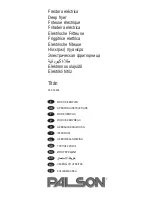
11
E. Exhaust Requirements
General Information
Exhaust duct work
should be
designed and installed by a competent technician. Improperly sized duct work will
create excessive back pressure which results in slow drying, increased use of energy, and shutdown of the burner
by airflow (sail) switch, burner hi-limit, or lint chamber hi-heat protector thermostat.
Where possible, it is suggested that a sperate (single) exhaust duct for each dryer/tumbler be provided.
CAUTION: IMPROPERLY SIZED or INSTALLED EXHAUST DUCT WORK CAN
CREATE A POTENTIAL FIRE HAZARD.
CAUTION: DRYER
MUST BE
VENTED TO THE OUTDOORS.
The exhaust duct work
should be
laid out in such a way that the duct travels as directly as possible to the
outdoors with as few turns as possible. The shape of the duct work is not critical so long as the minimum cross-
sectional area is provided.
It is suggested that the use of 90º turns in ducting be avoided; use 30º or 45º angles instead.
The duct work
should be
smooth inside with no projections from the sheet metal screws or other obstructions
which collect lint. When adding ducts, the ducts to be added should overlap the duct to which it is connected.
ALL
duct work joints
must be
taped to prevent moisture and lint from escaping into the building. Additionally,
inspection doors
should be
installed at strategic points in the exhaust duct work for periodic inspection and
cleaning.
The duct work material
must meet
applicable National, State, and Local codes, or in Canada, the duct work
material
must mee
t
applicable Canadian National, Provincial, and Local codes.
IMPORTANT
: When connecting duct work to the dryer’s top basket (tumbler) exhaust duct work, be
sure that when screws are used they
do not
restrict the operation (both opening and
closing) of the damper.
NOTE
: When the exhaust duct passes through a wall, ceiling, or roof made of combustible materials, the
opening
must be
2-inches larger (all the way around) than the duct. The duct
must be
centered
within this opening.
To protect the outside end of horizontal duct work from the weather, a 90º elbow bent downward
should be
installed where the exhaust exits the building. If the exhaust duct work travels vertically up through the roof, it
should be
protected from the weather by using a 180º turn to point the opening downward. In either case, allow
at least twice the diameter of the duct between the duct opening and nearest obstruction.
IMPORTANT
:
DO NOT
use screens or caps on the outside opening of exhaust duct work.
Содержание AD-530HS
Страница 20: ...16 ...
















































